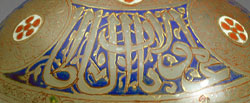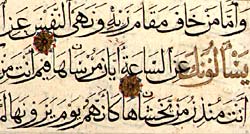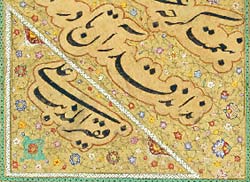
|
By the tenth century, the rapid spread of
Islam prompted calligraphers to refine and
standardize six cursive scripts—thuluth,
muhaqqaq, naskh, rayhani, tauqi, and
riqa—used for literary, religious, and
administrative works. Together with the
introduction of paper in the mid–eighth
century from China, the development of more
legible and easily transcribable scripts
revolutionized manuscript production
throughout the Islamic world. In fifteenth–century Iran, another script
known as nasta`liq was devised for the
transcription of poetry. This script was also
employed in India and Turkey, where Persian
literary culture prevailed.
|



|